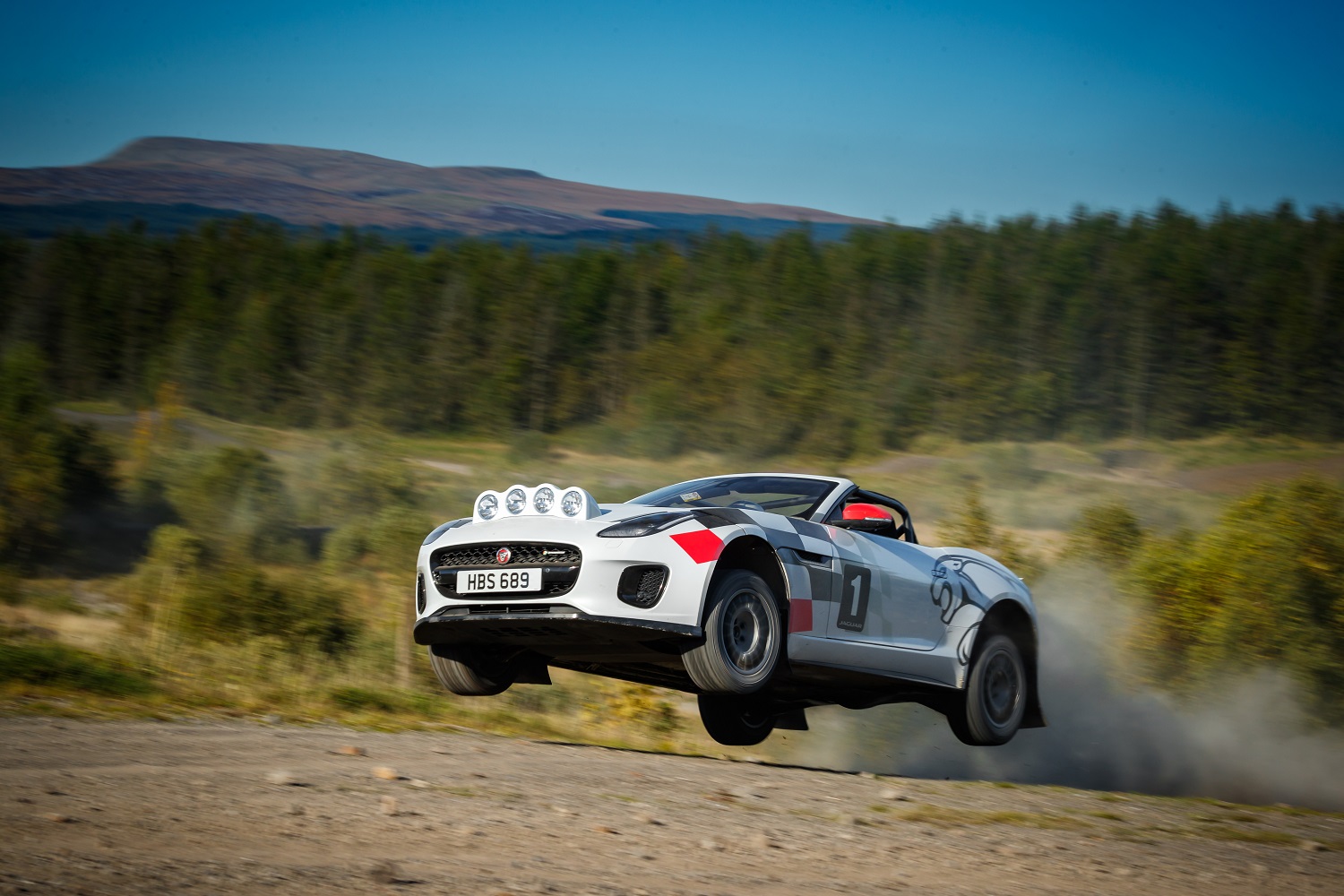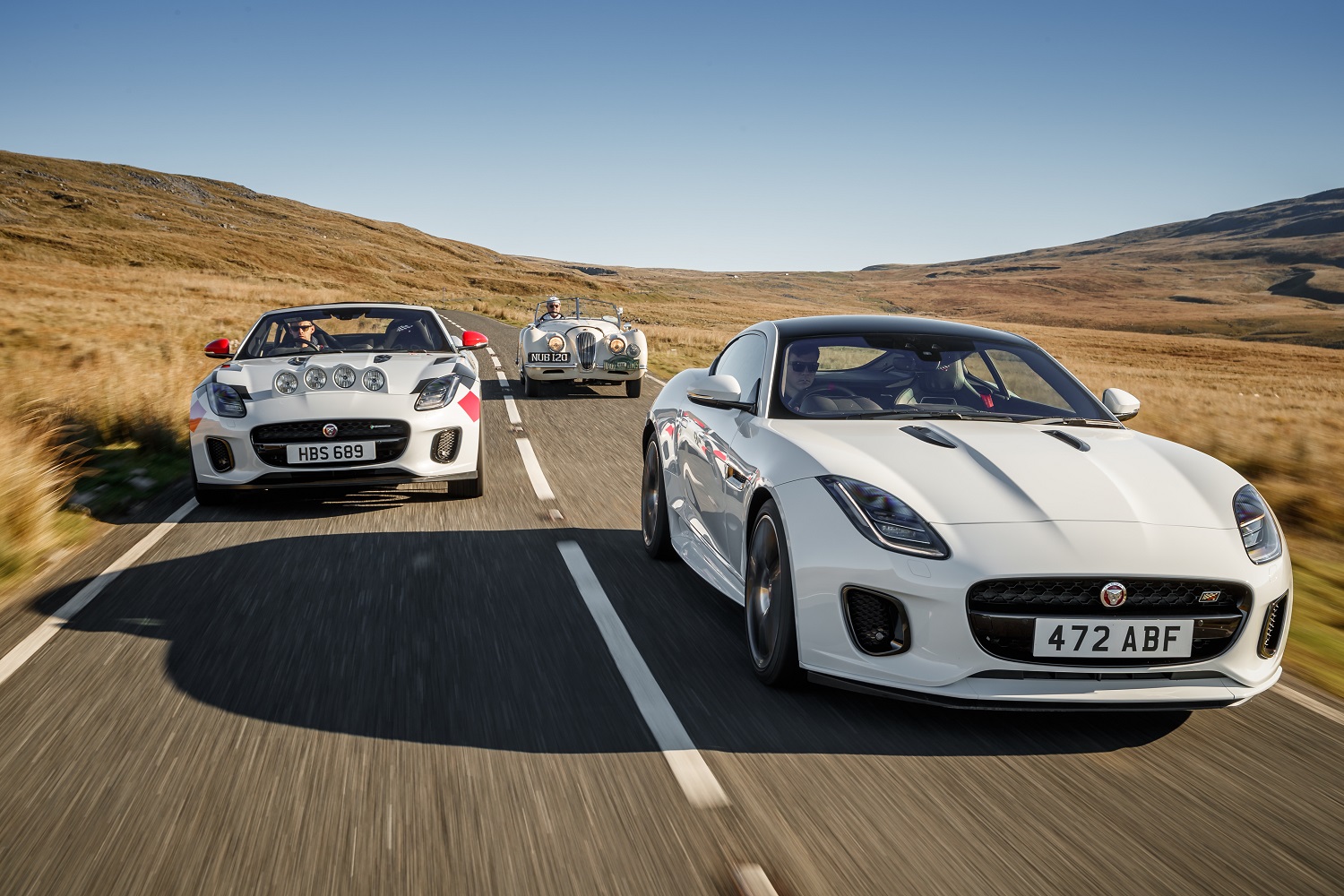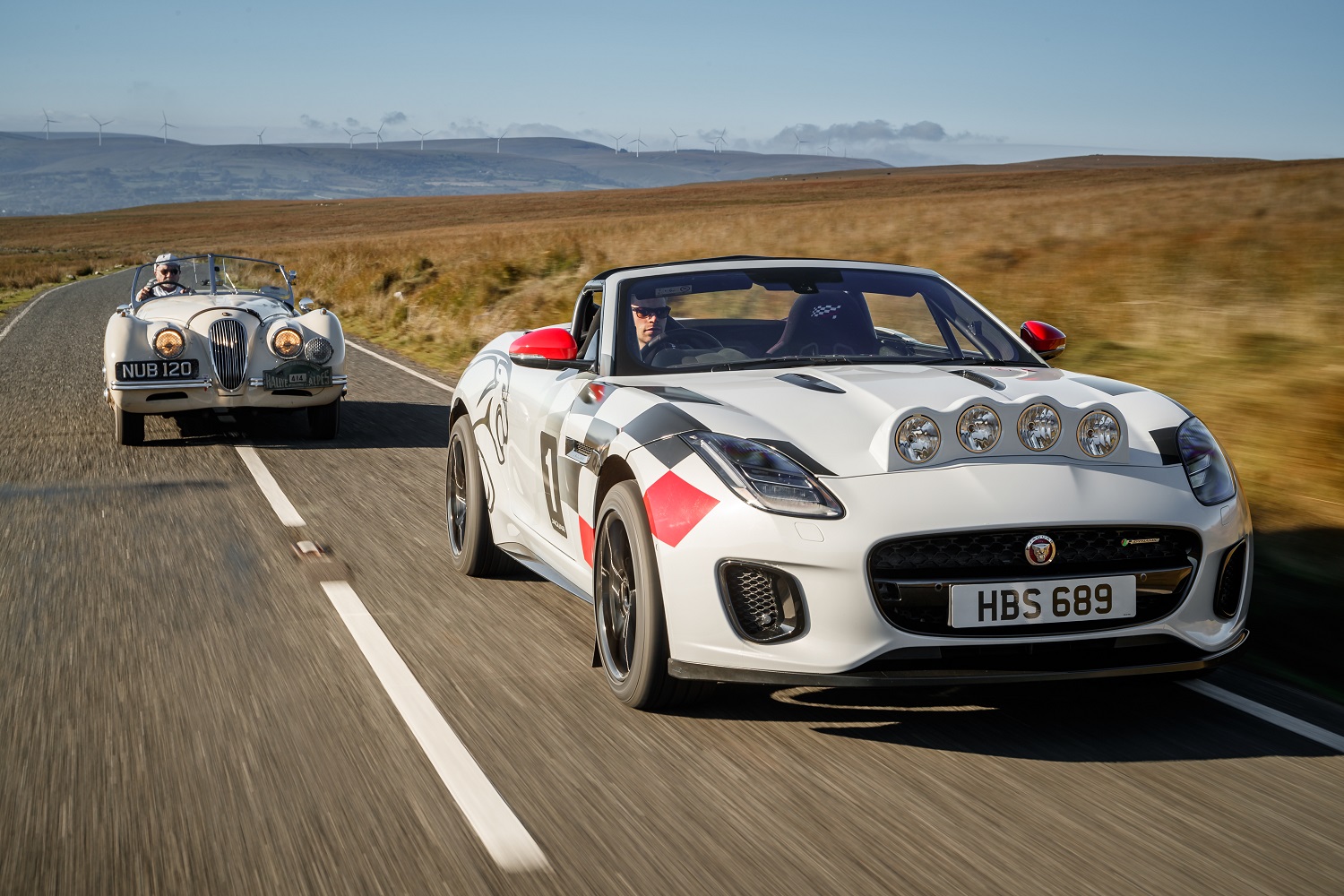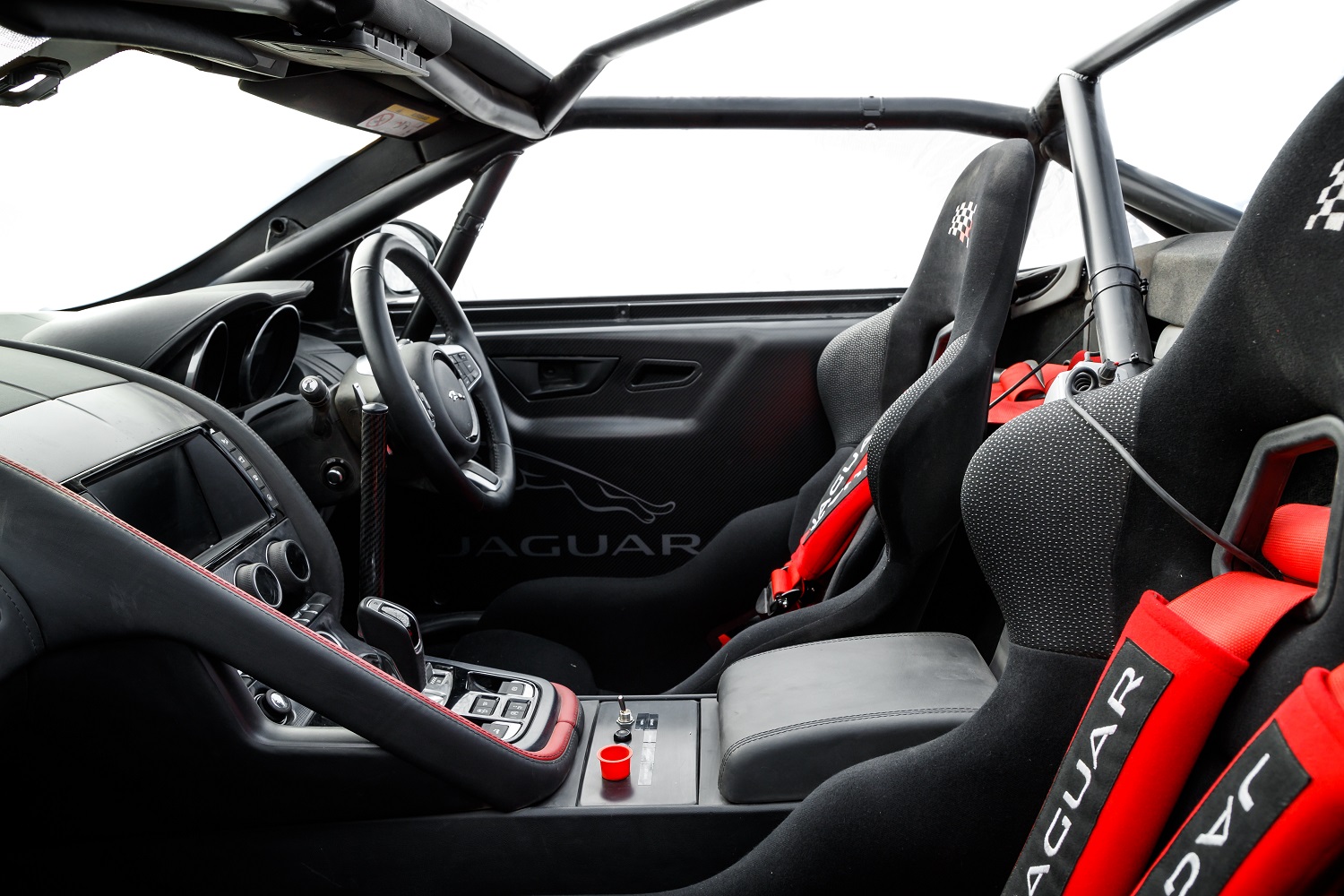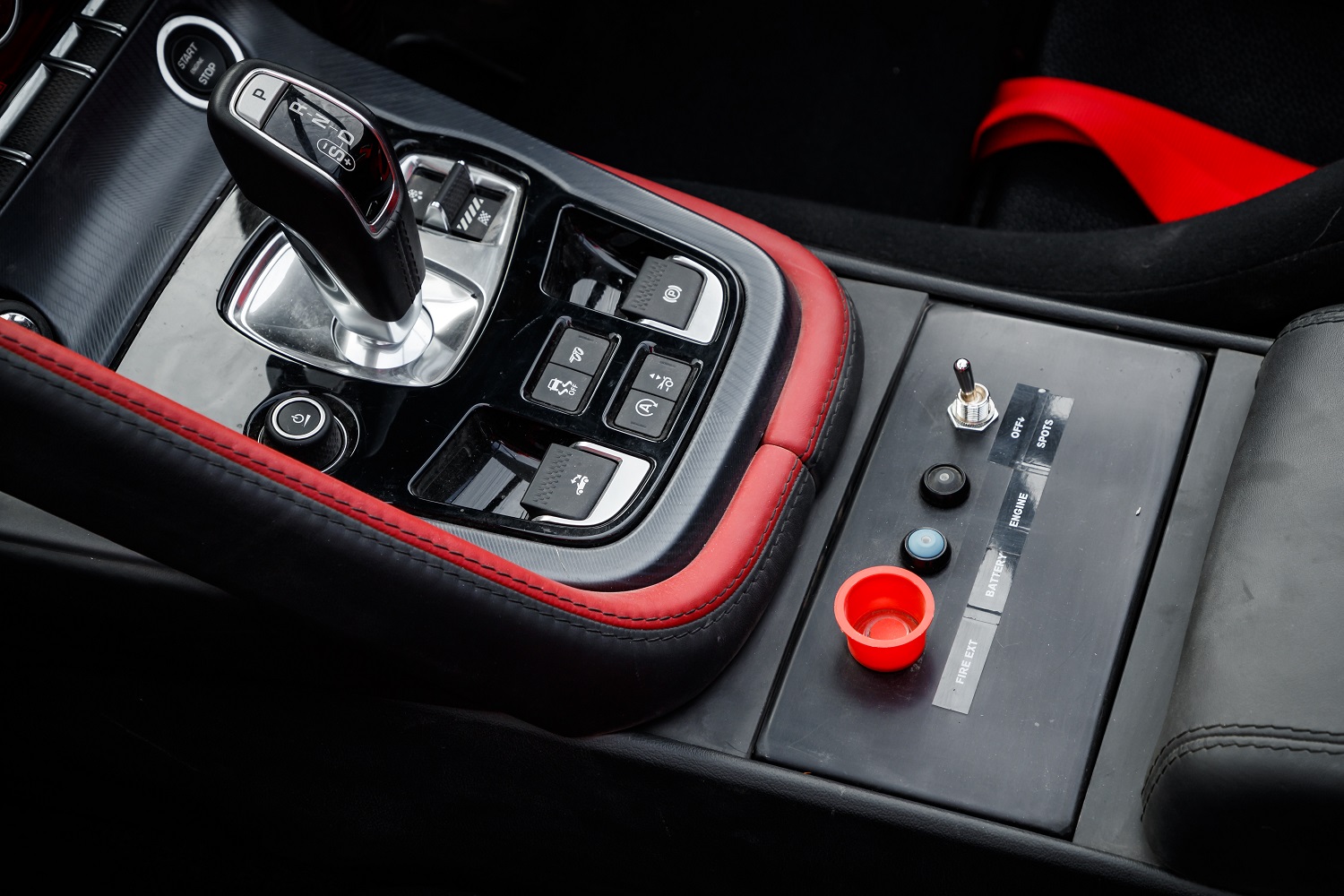The Jaguar F-Type is putting on a racing suit to celebrate the 70th birthday of one of its predecessors. The British firm has turned two topless examples of its halo sports car into full-blown rally machines with ample power to back up the look. Neither one will ever get the chance to fight for the top spot on the podium, however.
In 2018, going rally-racing in a convertible will raise more than a few eyebrows; chopping off the top reduces rigidity while exposing the pilot and the co-pilot to a copious amount of dust, water, and other elements encountered during a rally stage. The body style was a lot more common several decades ago, and Jaguar created its rally-ready F-Type as a tribute to the race-winning, 70-year-old XK120.
Designed to FIA specifications, the F-Type received upgraded brakes on both axles and a rally-specific suspension setup that adds more ground clearance plus additional wheel travel. The tweaks let the roadster drive flat-out on rough and uneven terrain –something we never thought we’d write about the F-Type. Jaguar also added off-road tires wrapped around alloy wheels.
Outside, four additional lights installed on the hood and a set of mud flaps create that unmistakable rally look. Inside, a roll cage protects the occupants in the event of a rollover. The cabin also received a built-in fire extinguisher and a pair of bucket seats with racing harnesses.
Jaguar offers the F-Type with four-, six-, and eight-cylinder engines. It chose to start the rally build with the four-cylinder model. Power comes from a turbocharged 2.0-liter that sends 300 horsepower and 295 pound-feet of torque to the rear wheels through an eight-speed automatic transmission. Though the firm hasn’t published performance specifications, the bone-stock F-Type takes 5.4 seconds to reach 60 mph from a stop.
The rally-ready F-Type showed fans what it’s capable of during the Walters Arena rally stage held in South Wales. Jaguar notes the model will attend a series of brand-related events in the coming months, but a company spokesperson told Digital Trends there are no plans to race the model or sell it to pilots who want to compete in one. “It’s just a bit of fun,” the spokesperson summed up. That’s too bad; even the I-Pace, Jaguar’s electric crossover, is a blast on a race track, so we bet an F-Type purpose-built into a rally machine would fend off more than a few competitors.
Editors' Recommendations
- A racing-inspired software update could boost the Jaguar I-Pace’s range
- If you want to drive this electric Jaguar, you’ll have to play Gran Turismo
- 800 miles in an F-Pace SVR and 8 miles in an I-Pace shows Jaguar’s split personality
- One of Jaguar’s highest profile models will be reborn as an electric car
- Waymo at last fires up the self-driving smarts of the Jaguar I-Pace

